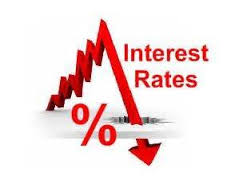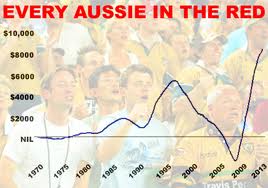 Not just in Westeros for Game of Thrones fans. There is undoubtedly a chill in the air now and winter is officially upon us. But as the days grow shorter and the air gets cooler there are some things you do that can push up costs.
Not just in Westeros for Game of Thrones fans. There is undoubtedly a chill in the air now and winter is officially upon us. But as the days grow shorter and the air gets cooler there are some things you do that can push up costs.
Winter is often a time that that sees expenses escalate.
There are some increased costs during winter that you can’t do a lot about. For example, it gets darker earlier so we turn on our lights earlier, which uses more power. We tend to wear more and heavier clothes during winter, so our washing load increases using more washing powder, water and electricity. We put heaters on in the mornings and evenings on those cold days. We tend to linger in the warm shower and use more hot water.
But if you are careful, you can minimise the impact and costs of some of other things. There are some simple measures you can take which reduce the impact of some of your winter expenses. You just need to watch out for certain things and take appropriate action.
These are just a few things that might help to keep down costs over winter:
- Lights: Unless it’s particularly cold or overcast, keep your blinds and curtains undrawn for as long as possible to take advantage of as much natural light as you can. Change to energy efficient bulbs. Also, it may sound obvious, but turn off lights in rooms you are not using.
 Keep in the warmth: If you are able, have your north facing windows open during sunny days so some of the daytime heat can come inside. As soon as it starts to get dark, close your windows, or if you like to let in fresh air, leave them slightly open. Once dark, draw curtains or close blinds to keep in the heat.
Keep in the warmth: If you are able, have your north facing windows open during sunny days so some of the daytime heat can come inside. As soon as it starts to get dark, close your windows, or if you like to let in fresh air, leave them slightly open. Once dark, draw curtains or close blinds to keep in the heat.
- Stop the cold coming in: Go around your house to see if you can find cold spots or from where cold air is coming in. Use draft stoppers at the bottom of doors. Heavy curtains on windows can also help keep the cold at bay. Stopping the cold from coming into your house in the first place can cut down on heating costs.
- Layer up: Put on another jumper, put on warm socks and slippers, put on a scarf and beanie if you need to. Consider adding more clothes before you switch on a heater.
- Use woollen underlays: Replace your electric blanket with a woollen underlay. It will provide an extra layer of warmth in the bed during winter and in summer, just turn it upside down with the smooth side up.
- Floor rugs: Thick rugs can be nice and warm underfoot, and will also help to provide a layer of insulation on the floor. These can be put away during the summer months if required.
- Close doors: Close doors to colder rooms such as laundries, bathrooms and garages to stop the colder air from these rooms moving into warmer living areas. Tiled areas generally tend to be colder.
- Use smaller heaters: Use smaller localised heaters rather than whole room heaters, as these take longer to heat up and use more power while doing so.
- Baths and showers: If you live with other people in the same place, try and have your baths or showers close together so the water going through the pipes doesn’t have time to cool and then need to reheat when the next person has a bath or shower and the room is still warm with retained heat.
- Go gas: Gas heaters are more cost effective than electric ones if you have access to gas.
- Adjust your refrigerator thermostat: If your refrigerator has an adjustable thermostat you can adjust the temperature to allow for the cooler room temperatures. This might be a good time to check the seals as well.
- Insulation: This is a larger initial expense and applies mostly to home owners, but adding insulation at least into your roof can knock a few degrees off during both winter and summer by keeping it warmer in winter and cooler in summer. Insulation in the walls will also help a great deal, but can usually only be done during construction, so consider putting this in if you are building a new home or undertaking structural renovations.
- Double glazing windows: Similarly, windows that are double glazed can be very effective at keeping in warmth in winter and coolness in summer, but like installing insulation, this can be costly. Again, something to consider when renovating or do a few windows at a time, particularly south facing ones, until they’re all done.
- Buy food in season: Winter is a perfect time for comfort foods such as hearty soups, stews and casseroles, as it’s the season for all those filling vegetables such as potatoes, carrots, parsnips, onions and similar root vegetables and tubers. These vegetables also roast very well for some hot roast dinners. Make enough for more than one meal and freeze the rest for future meals or bring some to work for lunch.
Your health is your wealth: Citrus fruit are in abundance during winter and are full of the vitamins and minerals you need to help keep those colds and flus at bay. Consider investing in a juicer or one of those magic bullet blenders for healthy start citrus fruit smoothies and juices. Add berries for an even bigger antioxidant boost. Prevention is better than cure, so try to avoid those doctor’s bills and medications by not getting sick in the first place. Supplements like vitamin C, Echinacea, garlic tablets and olive leaf extract can also act as a preventative for many viral infections such as colds and flus.
Although costs tend to go up over winter there are still ways to cope comfortably with the colder weather without spending a fortune.
You can still have a snug and warm but cost effective and energy efficient house. Just taking sensible measures can cut costs during our colder months.





















